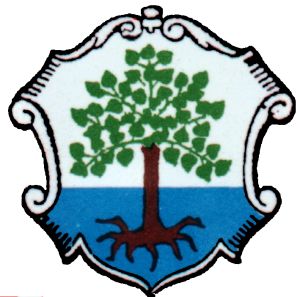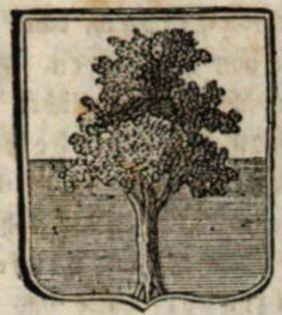Niederraunau: Difference between revisions
Jump to navigation
Jump to search
Knorrepoes (talk | contribs) No edit summary |
Knorrepoes (talk | contribs) |
||
| Line 12: | Line 12: | ||
===Origin/meaning=== | ===Origin/meaning=== | ||
The arms were first granted in 1613 from the Provost of the Eichstätt monastery and confirmed by King Ludwig I of Bavaria on November 27, 1836. | |||
The silver and blue divided shield is taken from the arms of the Lords of Freyberg-Eisenberg, lords of the village in the 19th century, and who lived in the local castle from 1557-1847. The tree is a linden tree and probably is a symbol of justice or freedom. | |||
{|align="center" | {|align="center" | ||
| Line 20: | Line 22: | ||
{{media}} | {{media}} | ||
[[Civic Heraldry Literature - Germany|Literature]] : | [[Civic Heraldry Literature - Germany|Literature]] : Kramer (1841) | ||
[[Category:German Municipalities N]] | [[Category:German Municipalities N]] | ||
| Line 26: | Line 28: | ||
[[Category:Günzburg]] | [[Category:Günzburg]] | ||
[[Category:Krumbach]] | [[Category:Krumbach]] | ||
[[Category:Granted 1613]] | |||
[[Category:Granted 1836]] | |||
Revision as of 07:56, 30 August 2020
This page is part of the German heraldry portal |
Heraldry of the World |
|
German heraldry:
|
Selected collector's items from Germany:
|
NIEDERRAUNAU
State : Bayern
District (Kreis) : Günzburg (until 1972 Krumbach)
Incorporated into : 1977 Krumbach
Official blazon
- (de)
Origin/meaning
The arms were first granted in 1613 from the Provost of the Eichstätt monastery and confirmed by King Ludwig I of Bavaria on November 27, 1836.
The silver and blue divided shield is taken from the arms of the Lords of Freyberg-Eisenberg, lords of the village in the 19th century, and who lived in the local castle from 1557-1847. The tree is a linden tree and probably is a symbol of justice or freedom.
| The arms in Kramer (1841) |
Contact and Support
Partners:
Your logo here ?
Contact us
© since 1995, Heraldry of the World, Ralf Hartemink 
Index of the site
Literature : Kramer (1841)













